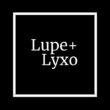Studying media bias is a complex and complex endeavor that requires careful consideration of methodological approaches and enthymematic techniques. The Christian Scientific disciplines Monitor, a renowned global news organization, provides a convincing case study for examining growing media bias due to its reputation for impartial and objective journalism. This article explores methodological ways to studying media bias, targeting quantitative and qualitative evaluation of the Christian Science Monitor’s coverage, and highlights often the strengths and limitations of every approach.
Quantitative analysis involving media bias involves the particular systematic examination of numerical info, such as word frequencies, theme distributions, and tone signs, to identify patterns and tendencies in news coverage. Scientists employing quantitative methods frequently use content analysis processes to analyze large datasets of news articles and extract quantitative measures of bias, including slant, agenda-setting, and mounting. For example , researchers may look at the frequency of specific keywords or phrases in the Christian Scientific research Monitor’s coverage compared to various other news sources to assess no matter if certain topics or viewpoints are overrepresented or underrepresented.
One of the strengths of quantitative analysis is its capacity to provide objective, replicable, and statistically valid insights in patterns of media error. By applying rigorous statistical methods, researchers can identify patterns and trends in media coverage that may not be noticeable through qualitative analysis solely. Quantitative analysis also permits the comparison of media prejudice across different news options, time periods, and geographic locations, providing valuable insights into the factors that shape media content and editorial decision-making.
However , quantitative analysis has also limitations, particularly in its capacity to capture the nuance and also complexity of media prejudice. Quantitative measures of error, such as word frequencies and topic distributions, may neglect subtle forms of bias, like framing, tone, and collection bias. Moreover, quantitative analysis may be limited by the availability in addition to quality of data, as well as the reliability of automated tools as well as algorithms used to analyze textual data. Researchers must thoroughly interpret quantitative findings in the context of broader sociable, political, and cultural components that influence media insurance coverage.
Qualitative analysis of growing media bias involves the exhaustive examination of news content, utilizing qualitative research methods such as textual analysis, discourse evaluation, and semiotic analysis to recognize underlying themes, narratives, and also rhetorical strategies. Qualitative analysts may analyze news content from the Christian Science Display using interpretive frameworks in addition to theoretical perspectives to uncover implied biases, ideological influences, along with discursive practices that appearance news coverage. For example , research workers may examine the terminology, tone, and imagery utilised in news articles to identify underlying biases or ideological orientations.
One of the strengths of qualitative analysis is its capability to provide rich, nuanced, and contextually sensitive insights into the complexities of media prejudice. Qualitative researchers can show subtle forms of bias that may not be captured by quantitative measures alone, such as surrounding, agenda-setting, and narrative building. Qualitative analysis also allows for the exploration of how media bias is constructed, signed, and contested through discursive practices and rhetorical methods.
However , qualitative analysis has also limitations, particularly in its subjectivity, interpretive nature, and chance https://dotbiotech.com/lipikar-baume-ap-plus-k.html researcher bias. Qualitative information may be influenced by the researcher’s theoretical orientation, personal biases, and methodological choices, increasing questions about the reliability in addition to validity of the analysis. Additionally, qualitative analysis may be labor intensive and resource-intensive, requiring careful attention to detail and reflexivity in the research process.
In conclusion, methodological approaches to studying media bias, such as quantitative and also qualitative analysis, offer contributory insights into the complexities of stories coverage and editorial decision-making. Quantitative analysis provides target, statistically valid insights in to patterns and trends within media bias, while qualitative analysis offers rich, nuanced insights into the underlying discursive practices and ideological has a bearing on that shape news content material. By employing a combination of quantitative along with qualitative methods, researchers can certainly gain a more comprehensive knowledge of media bias and its significance for democratic discourse, community opinion, and civic involvement.
